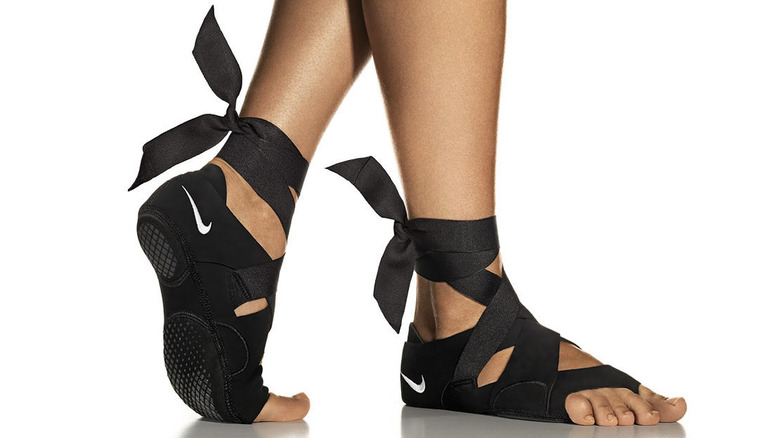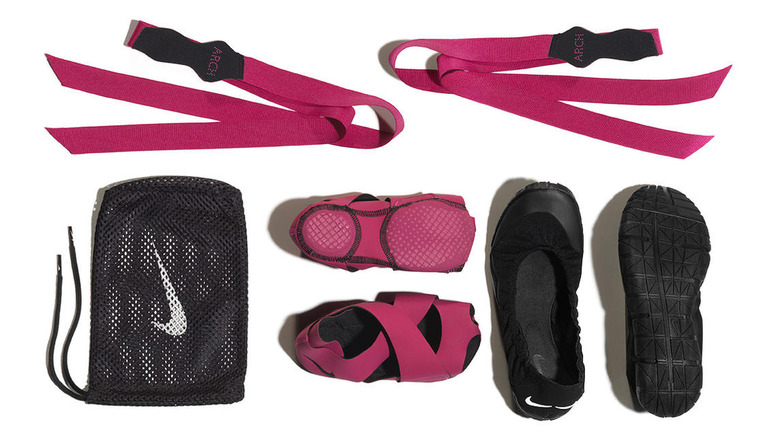Are Nike Yoga Wrap Shoes Worth It?
We may receive a commission on purchases made from links.
Launched in 2013, the Nike Studio Wrap quickly became a staple in yoga and pilates routines (via Fashion Network). Described by the brand as a "better-than-barefoot experience," the shoe was designed to "give women an elevated workout in the studio" by combining grip support with breathable, flexible materials to provide stability during yoga, pilates, and barre workouts.
As So Much Yoga explains, the Wrap "is essentially a ballet shoe that leaves your toes exposed" while giving your heel and sole the traction needed to perform routines between the floor and the mat. The bottom of the Wrap has a silicone grip pattern that provides traction "without impeding your ability to pivot, spin, or move your feet quickly," notes So Much Yoga, so you can transition between movements with ease.
That all sounds well and good, but what do customers have to say about the Nike Studio Wrap itself? Does it live up to the hype?
Nike's Studio Wrap Shoes are definitely worth it
Well, it seems that Nike's yoga wrap shoes are certainly worth the hype. One happy customer shared their experience with the shoe on Zappos, writing that the shoe protects their "feet from the cold, dirty floors" and gives them "better traction" while performing certain moves. Thanks to the heel protection, they're also a lifesaver for dry, cracked heels. However, they note that after wearing them for "several months," the material stretched out quite a bit. "If I were using them for dance or more floor work, I would definitely want a tighter fit," they write. "As is, they are comfortable and don't rub anywhere on my foot."
Another customer said that while it took them a while "to get used to the feeling," they prefer it "over being barefoot at the gym." They, too, recommend being careful about the sizing, adding that if you're on the borderline of a size, you should go up to the next one.
So Much Yoga states that the Nike Wrap is certainly "worth the investment," as "there's a good heel cushion, they're flexible, and your toes are exposed. This means you can move between poses without slipping or needing to adjust. Greatist adds that you'll "never have to adjust them during class," and that it's like having "second layer of skin that grips the mat with ease, making each pose fluid and each transition seamless."

